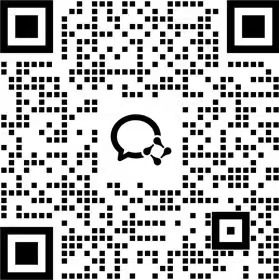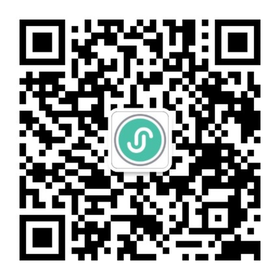
剑桥雅思9阅读Test4Passage2原文翻译
剑桥雅思9阅读Test4Passage2这篇文章主要探讨了孩子自我意识的形成过程
这篇文章主要探讨了孩子自我意识的形成过程,以及自体性和自体客体性两个关键特征的出现。根据威廉·詹姆斯和查尔斯·库利的理论,孩子在早期意识到自己的存在,并开始认识到自己的行动能力和与他人的独特性。通过与照顾者互动和模仿他人的行为,孩子逐渐认识到自己与他人的差异。在合作玩耍的过程中,孩子对自己作为主动行动者的理解不断发展。孩子将自己归类到一系列整体中,这反映了他们对自己独特品质的认知。自我意识的发展与社会因素密切相关,孩子通过他人对他们的反应和看法来建立自我认知。孩子在视觉上认识自己是一个重要的发展里程碑,表达自我意识的最明显表现可以在愤怒的情绪展示中观察到。这些发现有助于我们理解儿童的自我发展过程。
段落A A sense of self develops in young children by degrees. The process can usefully be thought of in terms of the gradual emergence of two somewhat separate features: the , and the . William James introduced the distinction in 1892, and contemporaries of his, such as Charles Cooley, added to the developing debate. Ever since then psychologists have continued building on the theory. | 段落A 孩子的自我意识是逐渐形成的。这个过程可以用两个相对独立的特征的逐步出现来解释:自体性和自体客体性。威廉·詹姆斯于1892年引入了这个区分,他的同时代人,如查尔斯·库利,继续为这个理论做出贡献。从那时起,心理学家们一直在这个理论基础上不断探索。 |
段落B According to James, a child’s first step on the road to self-understanding can be seen as the recognition that he or she exists. This is an aspect of the self that he labelled ‘self-as-subject’, and he gave it various elements. These included an awareness of one’s own agency (i.e. one’s power to act), and an awareness of one’s distinctiveness from other people. These features gradually emerge as infants explore their world and interact with caregivers. Cooley (1902) suggested that a sense of the self-as-subject was primarily concerned with being able to exercise power. He proposed that the earliest examples of this are an infant’s attempts to control physical objects, such as toys or his or her own limbs. This is followed by attempts to affect the behavior of other people. For example, infants learn that when they cry or smile someone responds to them. | 段落B 根据詹姆斯的观点,孩子在自我理解道路上的第一步就是认识到自己的存在。这是他所称之为“自体主体”的一个方面,他给予它各种元素。其中包括对自己行动能力(即行动力)的认识,以及对自己与他人的独特性的认识。这些特征逐渐在婴儿探索世界并与照顾者互动的过程中显现出来。库利(1902年)认为,自体主体意识主要与能够行使权力有关。他提出,最早体现这一点的例子是婴儿试图控制物体,比如玩具或自己的肢体。接着是试图影响他人行为的尝试。例如,婴儿会学会当他们哭泣或微笑时,有人会回应他们。 |
段落C Another powerful source of information for infants about the effects they can have on the world around them is provided when others mimic them. Many parents spend a lot of time, particularly in the early months, copying their infant’s vocalizations and expressions. In addition, young children enjoy looking in mirrors, where the movements they can see are dependent upon their own movements. This is not to say that infants recognize the reflection as their image (a later development). However, Lewis and Brooks-Gunn (1979) suggest that infants’ developing understanding that the movements they see in the mirror are contingent on their own, leads to a growing awareness that they are distinct from other people. This is because they, and only they, can change the reflection in the mirror. | 段落C 对于婴儿来说,关于他们对周围世界产生影响的信息的另一个重要来源是别人的模仿。许多父母在早期几个月里花费大量时间模仿他们婴儿的口音和表情。此外,幼儿喜欢看镜子,在镜子中他们能看到的动作取决于他们自己的动作。这并不意味着婴儿认出了镜子中的反射是他们自己(这是一个后来的发展)。然而,刘易斯和布鲁克斯-冈恩(1979年)认为,婴儿逐渐意识到他们看到的镜子中的动作与他们自己的动作相关,这导致他们日益意识到自己与其他人的区别。这是因为只有他们自己可以改变镜子中的反射。 |
段落D This understanding that children gain of themselves as active agents continues to develop in their attempts to co-operate with others in play. Dunn (1988) points out that it is in such day-to-day relationships and interactions that the child’s understanding of his- or herself emerges. Empirical investigations of the self-as-subject in young children are, however, rather scarce because of difficulties of communication: even if young infants can reflect on their experience, they certainly cannot express this aspect of the self directly. | 段落D 孩子们在尝试与他人合作玩耍的过程中,他们对自己作为主动行动者的理解不断发展。邓恩(1988年)指出,正是在这种日常关系和互动中,孩子对自己的理解逐渐形成。然而,关于幼儿自体主体的实证研究相对较少,因为存在沟通困难:即使年幼的婴儿能够反思他们的经验,他们无法直接表达这个自我方面。 |
段落E Once children have acquired a certain level of self-awareness, they begin to place themselves in a whole series of categories, which together play such an important part in defining them uniquely as ‘themselves’. This second step in the development of a full sense of self is what James called the ‘self-as-object’. This has been seen by many to be the aspect of the self which is most influenced by social elements, since it is made up of social roles (such as student, brother, colleague) and characteristics which derive their meaning from comparison or interaction with other people (such as trustworthiness, shyness, sporting ability). | 段落E 一旦孩子们获得一定程度的自我意识,他们开始将自己归类到一系列整体中,这些整体在定义他们作为“自己”的独特品质方面起着重要作用。这是自我全面意识发展的第二步,詹姆斯称之为“自体客体”。许多人认为,这个自我方面最受社会因素影响,因为它由社会角色(如学生、兄弟、同事)和特征组成,这些社会角色和特征的意义是通过与他人比较或互动而产生的(如值得信赖性、害羞、运动能力)。 |
段落F Cooley and other researchers suggested a close connection between a person’s own understanding of their identity and other people’s understanding of it. Cooley believed that people build up their sense of identity from the reactions of others to them, and from the view they believe others have of them. He called the self-as-object the ‘looking-glass self’, since people come to see themselves as they are reflected in others. Mead (1934) went even further, and saw the self and the social world as inextricably bound together: ‘The self is essentially a social structure, and it arises in social experience … it is impossible to conceive of a self arising outside of social experience.’ | 段落F 库利和其他研究者指出,一个人对自身身份的理解与他人对其身份的理解密切相关。库利认为,人们通过他人对他们的反应以及他们认为他人对他们的看法来建立自我认知。他将自体客体称为“镜子自我”,因为人们通过在他人中的反映中看到自己。米德(1934年)甚至更进一步,将自我和社会世界看作是密不可分的:‘自我本质上是一个社会结构,它在社会体验中产生...无法想象在社会经验之外产生自我。 |
段落G Lewis and Brooks-Gunn argued that an important development milestone is reached when children become able to recognize themselves visually without the support of seeing contingent movement. This recognition occurs around their second birthday. In one experiment, Lewis and Brooks-Gunn (1979) dabbed some red powder on the noses of children who were playing in front of a mirror, and then observed how often they touched their noses. The psychologists reasoned that if the children knew what they usually looked like, they would be surprised by the unusual red mark and would start touching it. On the other hand, they found that children of 15 to 18 months are generally not able to recognize themselves unless other cues such as movement are present. | 段落G 刘易斯和布鲁克斯-冈恩认为,儿童能够在没有依靠运动的支持下视觉上认识自己是一个重要的发展里程碑。这种认识在他们两岁左右达到。在一个实验中,刘易斯和布鲁克斯-冈恩(1979年)在站在镜子前玩耍的孩子们的鼻子上抹了一些红粉,然后观察他们多久触摸自己的鼻子。心理学家推断,如果孩子们知道他们通常是什么样子,他们会对不寻常的红色标记感到惊讶,并开始触摸它。另一方面,他们发现15至18个月大的儿童通常无法在没有运动等其他线索的情况下认识到自己。 |
段落H Finally, perhaps the most graphic expressions of self-awareness in general can be seen in the displays of rage which are most common from 18 months to 3 years of age. In a longitudinal study of groups of three or four children, Bronson (1975) found that the intensity of the frustration and anger in their disagreements increased sharply between the ages of 1 and 2 years. Often, the children’s disagreements involved a struggle over a toy that none of them had played with before or after the tug-of-war: the children seemed to be disputing ownership rather than wanting to play with it. Although it may be less marked in other societies, the link between the sense of ‘self’ and of ‘ownership’ is a notable feature of childhood in Western societies. | 段落H 最后,普遍存在于18个月至3岁儿童中的表达自我意识的最明显的表现可以在愤怒的情绪展示中看到。在对三或四个孩子进行的一个纵向研究中,布朗森(1975年)发现他们争吵中的挫折和愤怒的强度在1至2岁之间急剧增加。这些孩子经常在争夺一件他们以前或以后都没有玩过的玩具时发生争执:他们似乎在争夺所有权而不是想玩它。尽管在其他社会中可能没有这么明显,但“自体”和“所有权”之间的联系是西方社会中儿童成长的一个显著特点。 |
2023年最新雅思模拟真题推荐:
| 2023雅思口语模考真题最新 |
| 2023雅思写作模考真题最新 |
| 2023雅思阅读模考真题最新 |
| 2023雅思听力模考真题最新 |
| 雅思口语模考 |
| 雅思写作批改 |
| 雅思真题资料题库PDF下载 |







